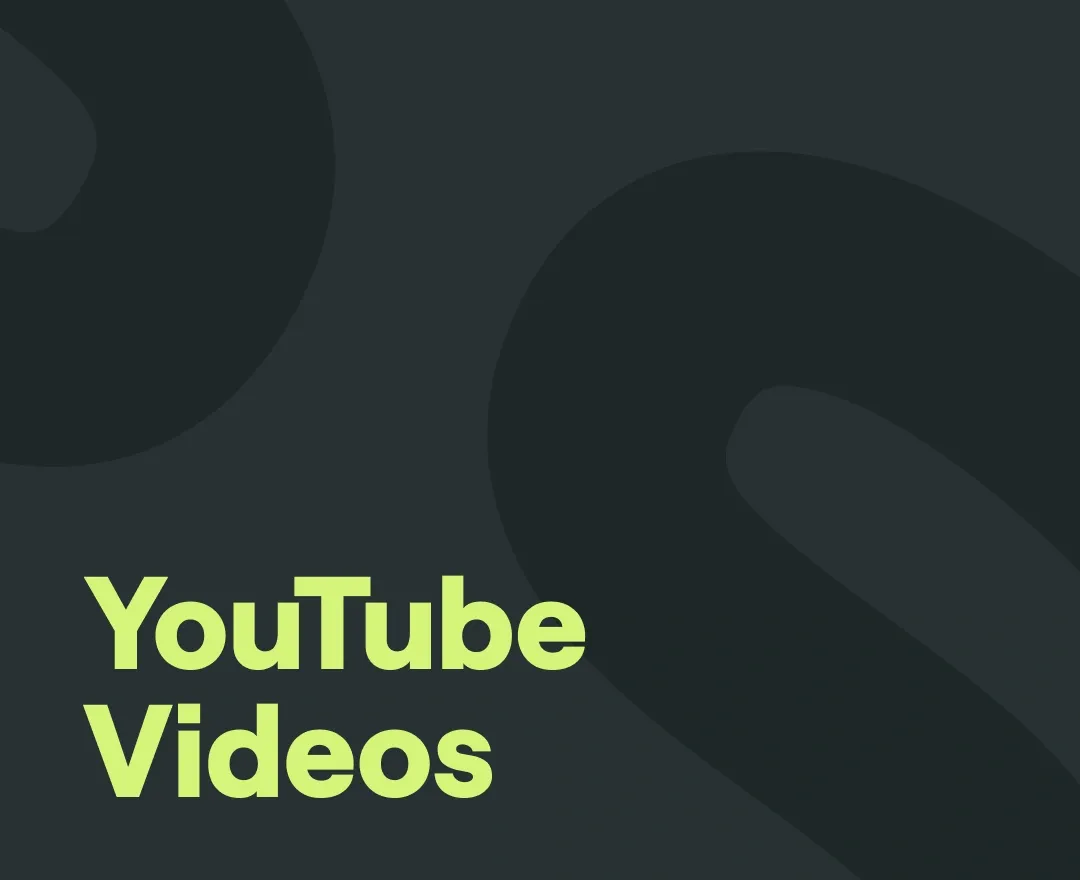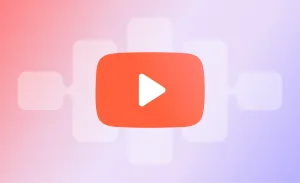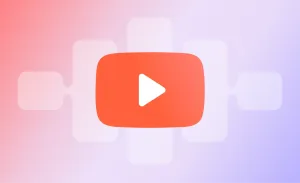YouTube has become so much more than a place to watch random videos—it’s where people build communities, express themselves, and even carve out entire careers. So, knowing how to make a YouTube video is practically a modern-day necessity.
It is a platform you can use to grow your personal brand, express your views on specific topics, or simply try your chance of going viral. And the best part is that you don’t even need a million-dollar budget or fancy equipment to get started. You can start your YouTube channel on a random Wednesday with nothing but your laptop and a desire to say something.
But enough of motivational speeches, you’ll find a bunch of them on YouTube (or maybe you’ll be the one making it yourself!)— you’re here to learn the how, and that’s what we’re here for. In this guide, you’ll learn how to make a YouTube video from scratch.
How to Make a YouTube Video: Step-by-Step Guide
Step 1) Brainstorming and Planning Content
Every great video starts with a solid plan. Before hitting record, take some time to figure out who you’re talking to and what you want to say, and what your overall YouTube strategy will be. This step is the foundation of YouTube content creation, helping you stay organized and focused from start to finish.
Know Your YouTube Audience
Who are you making this video for? Is it for beginners looking for tips, fans of a niche hobby, or someone who just wants to laugh for five minutes? Defining your YouTube audience will shape everything from your tone to your video’s content. The clearer you are about your viewers, the better you can connect with them.
Define Your Purpose
What’s the goal of this video? Are you educating, entertaining, or just sharing your thoughts on a topic you love? Setting a purpose keeps your content focused and makes it more engaging. Remember, viewers are more likely to stick around if they know what they’re getting from your video.
Brainstorm Unique YouTube Video Ideas
Think outside the box! What’s something fresh you can bring to your topic? Research trending ideas or explore your own experiences for inspiration. Look for ways to add your personality or a unique twist to stand out in a sea of videos.
Outline and Script for Structure
Don’t underestimate the power of planning. An outline or script can help you organize your thoughts and keep your video on track. If you’re worried about sounding rehearsed, teleprompters are a lifesaver—they let you follow your script smoothly without breaking the flow. In case you don’t know, a teleprompter is an app that displays your script as you record, so you can read it while maintaining eye contact with the camera.
Give it a shot next time if you’re feeling too stressed about the recording process.
Now that your content is planned, you’re ready to dive into the next step: getting your setup just right!
Step 2) Preparing Equipment and Setting Up
Once you’ve got your content planned, it’s time to get the right equipment and set up your space. YouTube equipment for beginners doesn’t need to break the bank—start simple and build from there. Whether you’re recording from a camera, your phone, or screen recording software, getting the basics right will set you up for success.
Essential Equipment
- Camera: You don’t need a professional camera to get started. Your smartphone can work just fine for learning how to make a YouTube video in the beginning. Look for one with good resolution and the ability to shoot in HD or 4K if possible.
- Microphone: Clear audio is a game-changer. Invest in a decent external mic, like a USB mic or lapel mic, to make sure your voice comes through crisp and clean. Don’t rely on your camera’s built-in mic if you can avoid it. Otherwise, if you’ve already recorded and can hear the noise, try to get rid of the background sounds with AI software during the production stage.
- Lighting: Good lighting can make a huge difference. Natural light is great, but if you're filming indoors, a ring light or softbox can help create even, flattering lighting without harsh shadows.
- Tripod or Stand: Keeping your camera steady is key for smooth shots. A simple tripod will stabilize your camera or phone, so you don’t end up with shaky footage.
Tips on Setup
- Find Your Best Lighting: Lighting makes a world of difference, so experiment with different setups to see what looks best on camera. If possible, face a window for natural light, or use a soft light source to avoid harsh shadows. Ring lights are affordable and popular among beginners for their even, flattering light.
- Choose the Right Location: Pick a quiet spot with minimal background noise, as you don’t want distractions while filming. Ideally, your background should be clean and uncluttered. If you’re filming at home, try setting up in front of a simple backdrop or a neat area. You can even get creative with a branded background if that suits your style!
- Test Your Audio: Before filming, always check your audio levels. Background noise can ruin a video, so make sure you're in a quiet room, and if you're using screen recording software, double-check the mic settings. Test a few lines of dialogue to make sure you’re coming through loud and clear.
- Use the Right Software: Don’t forget about the software side of things either. If you want a software to take care of both video and audio aspects of YouTube content creation, we suggest trying Podcastle. It’s the best choice for beginners as it offers everything you’ll need for your journey in one place: from high-quality recording to editing and AI-powered enhancement features, all wrapped up in a beginner-friendly interface.
For those of you who are stepping up your game and need a powerful video editor that can handle advanced video effects and complex transitions, we recommend giving Adobe Premiere Pro a try.Pair it with other Adobe Suite software, like Adobe After Effects for motion graphics or Adobe Illustrator for custom graphic design, to really take your content to the next level.
Whichever tool you choose, make sure you’re comfortable with it before you start filming or editing YouTube videos.
Step 3) Filming Your Video
Now that your content is planned and your setup is ready, it’s time to start filming! This is where your content for YouTube really comes to life, so making sure your shot composition, lighting, and audio are on point will set you up for success. Here are a few tips to make sure you look and sound great on camera while keeping your audience engagement at its best.
Composition Basics
- Rule of Thirds: Rule of thirds is one of the basic composition techniques to master. Imagine your frame is divided into a 3x3 grid. Position your subject (you!) along these lines to create a more balanced and visually appealing shot. It keeps the viewer’s eye focused on the most important parts of the frame.
- Framing: Keep your subject centered or follow the rule of thirds to avoid awkward cropping or too much empty space. A clean, properly framed shot feels more professional and engages the viewer.
- Eye Level: Make sure the camera is at eye level. Shooting from above or below can make the shot feel unnatural. Eye-level shots help maintain a connection with your audience.
- Background: A cluttered background can be distracting. Keep it simple and clean to ensure the focus stays on you. If you have branding elements, this is the place to add them!
Consistent Lighting and Audio
Good lighting and audio can make or break your video. Always try to keep your lighting consistent throughout the filming process to avoid dramatic changes in mood or quality. Natural light is great, but if you're filming indoors, make sure you have an even light source—such as a ring light or softbox. As for audio, check your microphone levels before you start recording. Clear, consistent sound is crucial for keeping your audience engaged.
Building On-Camera Confidence
Being confident on camera comes with practice. Start by speaking clearly and at a comfortable pace, and don’t be afraid to pause and collect your thoughts. It’s normal to feel a little awkward at first, but the more you film, the more natural you’ll feel. Watch your footage and learn from it—over time, you'll find your flow.
Step 4) Editing the Video
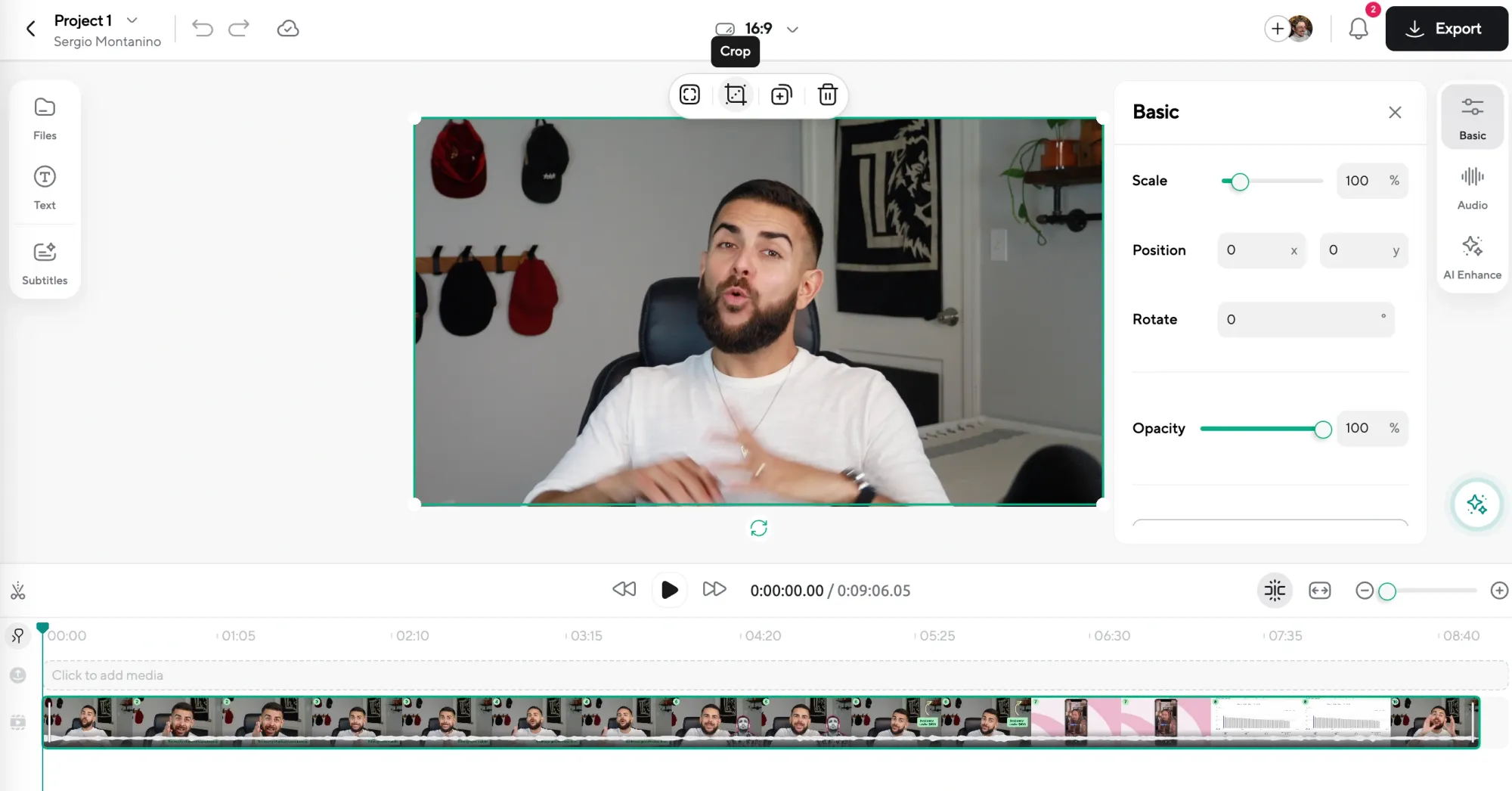
Now that you’ve filmed your content, it’s time to bring it all together with some video editing magic! This is where your footage transforms into a polished, professional-looking video. Whether you're trimming clips, adding transitions, or enhancing your audio, the goal is to create a seamless and engaging experience for your audience. Here’s how to approach the editing process to get the best results.
Selecting Your Top Footage
When editing, start by going through your raw footage and picking out the best clips. Be selective—choose the moments that align with your video editing goals and serve the purpose of your YouTube content. You don’t need every second of footage; just the best bits that tell the story clearly and concisely.
Adding Transitions
Transitions are key to making your video flow smoothly. Whether you’re cutting between scenes or switching angles, using simple, clean transitions can keep your audience engaged without distracting from the content. Avoid overusing fancy effects, as they can take away from the overall experience. Stick to basic fades or wipes for a more professional look.
Enhancing Your Audio
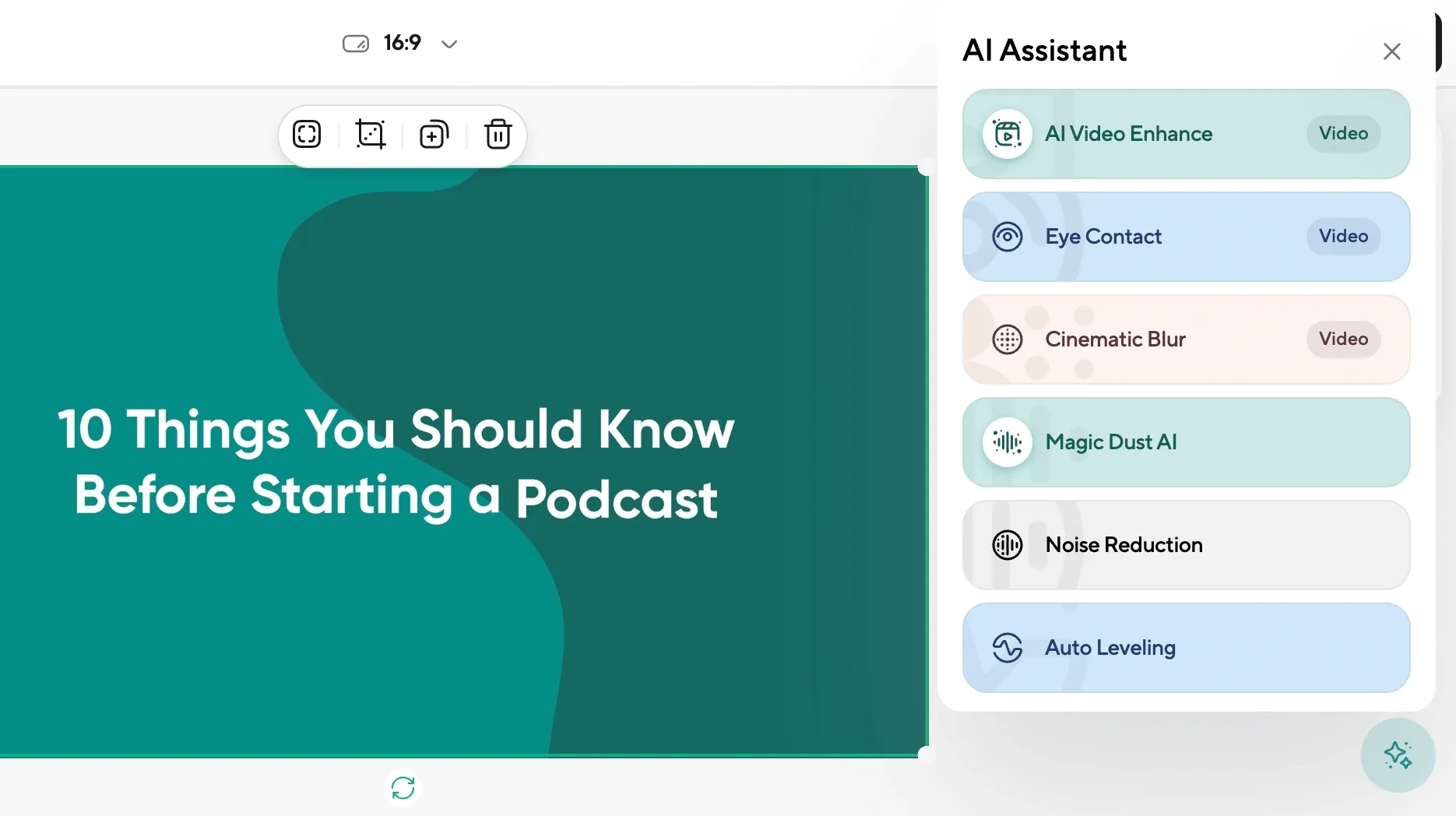
The sound quality of your video is just as important as the visuals. If your audio isn’t perfect right off the bat, don’t worry—video editing tools like Podcastle can help you clean up your audio track, enhance your voiceover, or add sound effects to elevate the overall experience. Clear, crisp audio makes your content sound professional and keeps your audience engaged.
Incorporating Branding Elements
Finally, add those personal touches to make your video stand out. This can include a video intro or outro with your logo, a catchy jingle, or a watermark that reinforces your brand identity. These elements help your YouTube audience recognize your content and create a consistent brand experience across your videos.
Quick Editing Tips Recap
– Select only the best clips that align with your message.
– Use simple transitions to keep the video flowing.
– Enhance your audio with tools like Podcastle to ensure clarity.
– Add branding elements like intros, outros, and watermarks for consistency.
Step 5) Optimising for YouTube
To get your video seen, you need to make sure it’s properly optimized for YouTube’s algorithm. This is where video optimization for YouTube comes into play. Start with a compelling thumbnail—it’s the first thing viewers see, and it needs to grab their attention. Make sure your thumbnail is clear, visually appealing, and represents the content accurately. A well-designed thumbnail can significantly increase your click-through rate, making it one of the most important elements of YouTube SEO.
Next, focus on your video’s title, description, and tags to make sure your content is discoverable. A strong, SEO-friendly title should include relevant keywords, but don’t overdo it—keep it natural and catchy. The description is your chance to give more context and include those keywords as well, while also providing any additional links or information viewers might need.
Tags help YouTube understand what your video is about, so be sure to use a mix of broad and specific tags related to your content. This combination of SEO for video content will boost your video’s chances of appearing in search results and suggested videos, helping you reach a wider audience.
Step 6) Publishing and Promoting the Video
Now that your video is ready, it's time to hit that publish button and get it in front of your YouTube audience. But simply uploading it isn’t enough—promoting your video and engaging with viewers is key to growing your channel. Here’s how you can maximize your video's reach and build a community around your content.
- Publish at Optimal Times: Timing matters! Publish your video when your audience is most active to increase views and engagement right from the start. This helps boost your video’s performance and visibility in search results.
- Promote on Social Media: Don’t just rely on YouTube—share your video (or repurpose bits of it) on other platforms like Instagram, Twitter, and Facebook to drive traffic and expand your reach. Each share is another opportunity to connect with potential viewers.
- Engage with Your Viewers: Respond to comments, ask questions, and encourage viewers to share their thoughts. Building audience engagement helps foster a loyal community and keeps people coming back for more.
Tips for Staying Consistent and Growing
Staying consistent is key to building a loyal audience and growing your channel over time. Start by setting a realistic publishing schedule that you can stick to. Whether it's once a week or twice a month, consistency helps keep your content fresh in your audience’s mind. It also signals to YouTube's algorithm that you're an active creator, which can improve your video rankings. Find a rhythm that works for you—there’s no need to overcommit or burn out.
Take advantage of YouTube Analytics to track your performance and learn what works. Look at your video’s watch time, click-through rate, and audience demographics to fine-tune your future videos. Don’t be afraid to experiment with new YouTube video ideas and formats based on the feedback you get from both your analytics and comments. The more you listen to your audience and adjust, the better your content will become. Stay patient and keep improving—it’s all part of the process!
Why Podcastle is the Ideal Tool for Your YouTube Videos
When it comes to editing your YouTube videos, having the right tools can make a huge difference. Podcastle is perfect for audio editing and voiceovers, providing an easy-to-use platform that delivers professional sound quality, even for beginner creators. Whether you're recording voiceovers, removing background noise, or fine-tuning your audio, Podcastle ensures your sound is crisp and clear.
With Podcastle, you can save time and focus on what matters most: creating great content. Its intuitive features are designed to enhance your YouTube content creation process, making it a great tool for improving your videos without complicated software.
